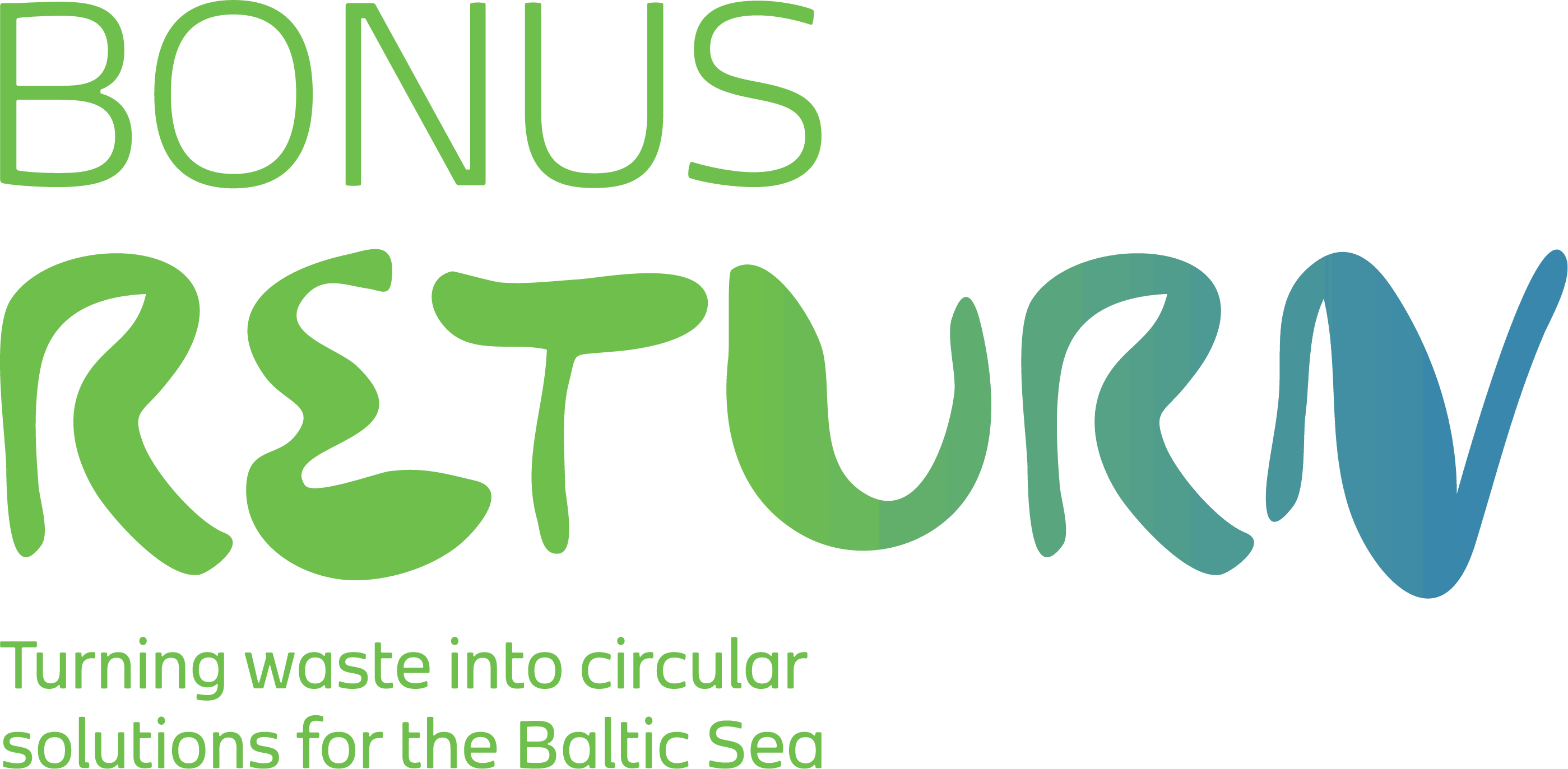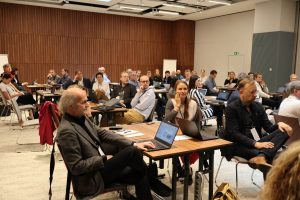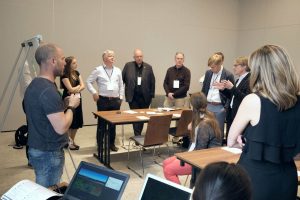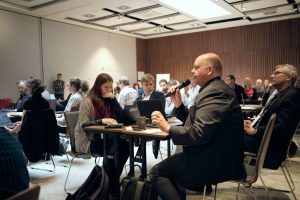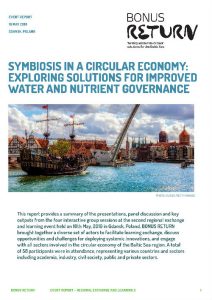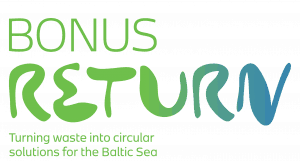A recent workshop in Gdansk, Poland organised by BONUS RETURN, showcased technological innovations centred around nutrient recovery and reuse in the Baltic Sea region and discussed what’s needed to develop the sector.
The phrase “reduce, reuse, recycle and recover” summarizes the idea behind the circular economy. Collaboration between companies or sectors aimed at symbiosis – where waste or waste by-products become a resource for something else – is central to business models that help build a circular economy. But despite technical and institutional progress towards circularity, knowledge, market and policy gaps remain.
The workshop gathered innovators, public authorities, and researchers in wastewater treatment and agriculture to discuss how to fill these gaps and transition to more circular and symbiotic systems.
Below are some highlights from the panel session.
Successful examples of symbiotic and circular initiatives
Principles of industrial symbiosis and circularity are difficult to apply due to a general lack of local know-how. But there are success stories and a range of promising symbiotic initiatives in the pipeline.
Palopuro Agroecological Symbiosis in Finland and Kalundborg Symbiosis in Denmark are initiatives that demonstrate that it is possible to achieve symbiosis through a circular approach among stakeholders.
Palopuro Agroecological Symbiosis is a project based at the University of Helsinki working at a farm in Hyvinkää. The farm is the centre of a cooperative food production system based on energy and nutrient self-sufficiency. This multi-enterprise network aims to produce local, organic food using bioenergy and recycled nutrients, and also to serve as a model for organic food production and processing which is truly energy and nutrient self-sufficient. Kari Koppelmäki, the project coordinator, said there is always potential to introduce new technologies, but financial strain and lack of available markets are major challenges. There are plenty of available resources on farms which are underused, he explained, and it should therefore be easier to put these to work for environmental and economic benefits. However, Koppelmäki added that “balancing supply and demand is difficult when production is at a small scale, as one needs to recover phosphorus of the same quality as that on the market to be able to sell the product”.
Kalundborg municipality works with circular production of sludge, treating wastewater from homes and companies and delivering nutrient-rich sludge to farmers for use as fertilizer. Kalundborg Symbiosis – a partnership between nine public bodies and private companies – is the world’s first example of industrial symbiosis and has been running for more than 50 years. David Marhauer-Nimb, project leader at Kalundborg Symbiosis, explained that although the partnership evolved organically, its success is down to business agreements that are preceded by financial feasibility assessments, as well as analysis of mutual benefit among partners. Legislation can also support symbiotic models and help build bridges between innovation and markets. This underscores the importance of public procurement for fostering sustainable innovations.
In the parallel sessions the issue of public procurement was a key topic of discussion. Public procurement constitutes a major share of public spending and is increasingly recognized as an untapped potential for driving a transition towards a circular economy. Countries like Germany, Denmark and the Netherlands have new national policies in place to support circular procurement, and successful experiences are starting to emerge in the Baltic Sea region.
However, participants highlighted that challenges remain in implementing circular procurement in the agriculture and wastewater sectors. These included a lack of knowledge at local levels on the different types of procurement, and how these should be applied at the different stages of an innovation. For example, innovation procurement is not the same as sustainable innovation procurement. The former focuses on innovations that are not yet out in the market, while the latter is a “normal” type of procurement for existing products and services but with additional social and environmental criteria. Understanding the different types of procurement and improving their consistent use is crucial for testing innovations locally.
Avoiding the valley of death
According to participants the biggest problem for innovators is surviving the so-called “valley of death” between innovation and market adoption, even when technical readiness is in place.
“Stakeholders have no real benchmark as to the monetary value of these products. And without legislation making recovery and reuse a requirement, market development will remain limited.”
— Prashanth Kumar, Aquacare
Aquacare has developed a technology called BioPhree®, which recovers phosphorus from agricultural runoff before it reaches the sea and converts it into a concentrated liquid that can be reused as fertilizer in agriculture.
For Aquacare, test beds like the one currently being carried out as part of the BONUS RETURN project allow for cheap, fast and small-scale testing of innovative approaches. As goods and services are developed at a more rapid pace and become increasingly complex, test beds are also becoming increasingly important for the public and private sectors alike.
However, test beds for circular solutions require adequate infrastructure as well as innovative business models and other agreements between different actors. Circular solutions, in particular, remain a niche market with limited profitability. To overcome this problem, research and investment are needed to identify and establish innovative partnerships.
EasyMining has also developed a process to recover and recycle phosphorus as a fertilizer, called Ash2Phos. The process is based on wet chemical processing of ash from mono-incinerated sewage sludge. The process not only recovers clean phosphorus, but also aluminium and iron from the ash. Despite recent success in German markets, EasyMining faces challenges in obtaining a high rate of phosphorus recovery in a market-ready, commercial form. Besides the technical function of the process, “Innovators need to think about the end-user who will be purchasing the product,” said Yariv Cohen.
Here, the panel discussion revealed an enormous gap: while much focus is placed on the development of techniques, there is comparatively little attention paid to product development and business plans. Because of a lack of knowledge of the perceptions, needs and choices of end-users to enable market uptake, the use of recycled products such as agricultural fertilizers remains limited, despite the fact that recovery and recycling of nutrients from agricultural, industrial and urban waste has been strongly promoted in EU circular economy policies.
Participants at the workshop
Scaling up
Scalability is the most important aspect in making a model transferable, explained Pär Larshans from Ragn-Sells. How can existing models with a proven track record of success be transferred to other parts of the world?
Anna Calo of A2T explained that it is possible to scale up a proven working model, but it might not be successful in the same location as where it was developed, pointing to the example of the wet composting plant that was piloted in Hölö, Sweden. This process, which transforms latrine sludge into fertilizer for cropland, is now being replicated in other parts of the world using the A2T technology. It provides containerized modular sanitation systems including black water treatment with secured sanitization, producing a risk-free fertilizer for reuse of valuable nutrients on arable land. A2T has received global interest and is today an attractive option for small to medium-sized communities in countries like Bolivia.
Despite international success, upscaling technologies like A2T in the Baltic Sea region faces several constraints, which were highlighted in discussions. First, reuse-based products need to be attractive to end-users by being competitive with other products in terms of price and quality. They are not, today. Second, quality criteria should focus on the product, not the origin. Currently, using recycled substances from waste for human consumption, like phosphorus, is not allowed in EU regulations, despite lower concentrations of various contaminants in comparison to mined phosphate. Third, reused-based nutrient products are still an emerging market with a lot of uncertainties. Regulations and standardization will help, including standardized criteria across product types.
Circular economy is about collaboration
While market maturity was identified as the most challenging barrier, interactions between actors across sectors was seen as crucial for transformation. “It is important for politicians to understand that for system changes to occur, there must be trust between legislators, farmers and innovators. Each player has a role to play towards effective collaboration,” said Pär Larshans. He added that stakeholders, such as the fertilizer industry, are crucial in this movement of change, and should be addressed individually to acknowledge that they are also part of the solution.
“A circular economy is about collaboration, if you try to win by yourself, you will definitely lose.”
— Pär Larshans, Ragn-Sells
